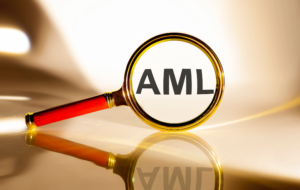In the intricate world of financial transactions, the term “Anti-Money Laundering” (AML) emerges as a beacon of integrity, ensuring that the economic ecosystem thrives on legitimate dealings. This article aims to unravel the complexities surrounding AML, shedding light on its significance, mechanisms, and the pivotal role it plays in safeguarding the global economy.
The Essence of AML: A Shield Against Financial Crime
Defining AML: At its core, Anti-Money Laundering refers to a set of laws, regulations, and procedures designed to prevent criminals from disguising illegally obtained funds as legitimate income. It’s the financial world’s frontline defence against the dark underbelly of money laundering.
Global Impact: AML is not confined to one country or sector; it’s a global crusade against financial crime, with international bodies like the Financial Action Task Force (FATF) leading the charge by setting global standards.
Sector-Specific Strategies: From traditional banks to cryptocurrencies, AML measures are tailored to fit and mitigate the unique risks and vulnerabilities of different sectors, ensuring a robust defence framework across the financial ecosystem.
Navigating the AML Landscape: Key Components and Strategies
Know Your Customer (KYC): KYC procedures are the cornerstone of AML efforts, requiring regulated institutions to verify the identity of their clients and assess potential risks of illegal intentions.
Transaction Monitoring: Continuous surveillance of transactions is vital to detect and report suspicious activities, from large cash deposits to rapid transfers between accounts.
Regulatory Reporting: AML regulations mandate the reporting of certain transactions to regulatory bodies. This includes the filing of Suspicious Activity Reports (SARs) when a certain transaction or activity raises red flags.
The Future of AML: Trends and Innovations
The landscape of Anti-Money Laundering is ever evolving, with technology playing a key role in shaping its future.
Leveraging on Technology: Advanced analytical tools and artificial intelligence are revolutionizing the way institutions detect and prevent money laundering, offering more precision and efficiency.
Global Collaboration: As money laundering tactics become more sophisticated, international cooperation and information sharing between countries and institutions have become crucial.
Regulatory Evolution: The regulatory framework around AML is constantly adapting, with new guidelines focusing on emerging threats like crypto money laundering and the financing of terrorism.
Conclusion
Anti-Money Laundering is a dynamic and critical field that stands guard over the integrity of the financial system. By understanding its core principles, mechanisms, and the direction it’s headed, we can appreciate the complex battle against financial crime and the collective effort required to win it. As we continue to innovate and collaborate, AML remains our steadfast ally in ensuring a transparent, secure, and just financial world.
For those seeking further clarification or assistance in navigating the complex terrain of Anti-Money Laundering regulations and practices, VAF Compliance is at your service. Our team of experts provides comprehensive support, from understanding the basics of AML to implementing advanced compliance strategies tailored to your specific needs.
Contact us today to ensure that your operations not only meet the current standards but are also prepared for the evolving landscape of AML compliance. Together, we can contribute to a more secure and transparent financial environment.

